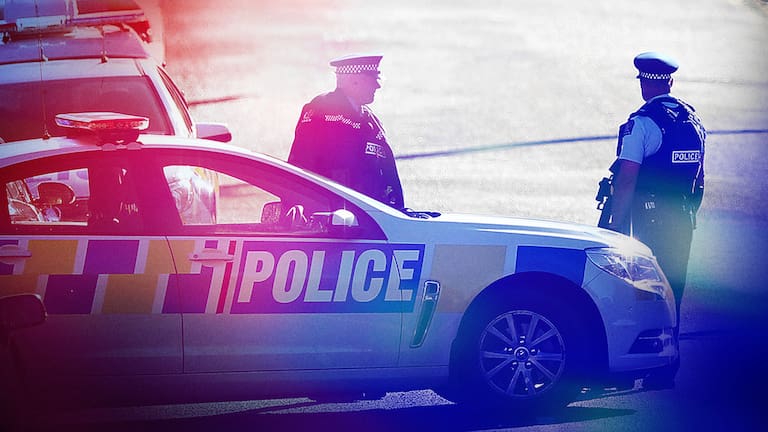It's "unacceptable" prisoners can be seen on CCTV undressing, showering and going to the toilet in several areas of an Otago prison, chief ombudsman Peter Boshier says.
Boshier carried out an unannounced inspection of the prison near Milton in October 2020 and found prisoners' privacy was being invaded in intervention and support unit cells, a cell wing and the receiving office.
The chief ombudsman noted in a report released on Monday this may be degrading treatment and a breach of article 16 of the convention against torture and other cruel, inhuman or degrading treatment or punishment (OPCAT).
Boshier said all of the cells in a wing called Hoiho - a management unit - were subject to CCTV monitoring, including the unscreened toilets.
"CCTV could be viewed by anyone entering the staff base, which presented a significant privacy issue."
He explained the practice of not screening toilets in management cells allowed prison staff, and others, to view prisoners while they undressed, showered, or used the toilet.
"I also note that for some prisoners on cell confinement in Hoiho, CCTV monitoring is a further unacceptable invasion of privacy, as confinement can be carried out in a cell without CCTV."
In the receiving office, six out of the seven holding cells had a screened toilet with integrated drinking facilities which were monitored by CCTV, Boshier noted.
"Cameras were positioned above the privacy screens, and CCTV could be viewed by anyone entering the staff base, and master control. As with the use of CCTV in the ISU and Management Unit, this presented a significant privacy issue."
In 2016, Boshier had recommended cameras should not cover toilets at the prison. He repeated this recommendation following a 2019 follow-up inspection.
In his 2020 report he recommended that prisoners cannot be viewed, directly or via CCTV, while undressing, showering, or using the toilet, including in the management and intervention support unit.
He said Corrections were considering implementing technology which pixelates CCTV footage and reviewing its regulatory framework.
"While the work underway in this area is welcome, repeated recommendations have been made to the Department of Corrections regarding this issue for a number of years," he stated.
"I encourage Corrections to conclude their review of regulations relating to privacy screening and their work on CCTV technology with urgency."
As a signatory to OPCAT, the chief ombudsman said in a statement it's important New Zealand is treating prisoners at a certain standard.
"This issue of CCTV coverage of showers and toilets is a matter I continue to find in corrections facilities," he said.
"As a minimum, the men in the care of Otago Corrections Facility should be able to carry out their ablutions with some privacy. I note that some of the prisoners include those under the age of 18. It is completely inappropriate that CCTV covers showers and toilets."
Use of force high
Boshier noted there were other practices at the prison which required improvement and a small number which were of "significant concern". This included the use of force.
Boshier said there had been 35 instances of use of force between April and September 2020, according to the use of force register.
His inspectors had reviewed a sample of on-body camera and CCTV footage relating to use of force incidents and found inconsistent use of de-escalation techniques.
Some staff also used unprofessional language and three incidents showed what appeared to be unreasonable use of force. One of the incidents had been identified by the prison as an unlawful use of force, which was being investigated.
Boshier said 10 of the 35 use of force instances involved the use of pepper spray. He noted in his 2020 report how he'd raised a concern about the high use of pepper spray at the prison in a 2019 inspection report.
He also said the standard of use of force paperwork was poor, with signatures and dates often missing, and remarked the reviews of incidents "were not occurring in a timely fashion".
Since his inspection, the prison now requires all use of force incidents be reviewed within 15 working days.
Boshier recommended the prison reduce its use of force, including the use of pepper spray.
Corrections responds
Chief custodial officer Neil Beales told 1News corrections is legally required to observe certain people in prison, such as those who are identified as being at risk of harm.
"Where there is a significant risk to a person's safety and wellbeing, we are required to provide an increased level of oversight," he said.
"Under current regulatory settings, people segregated for their mental health or subject to the penalty of cell confinement cannot be placed in cells with privacy barriers (covering hygiene areas of the cell). The corrections regulations clearly state there be no privacy screening or any other barrier that prevents a full view of the cell from the door window."
Beales said work is underway to "enhance the privacy of people in prison" and this includes a review of the current regulatory framework for privacy screens.
He said he is also looking at opportunities for improving CCTV use and storage which includes the potential for implementing technology that pixelates footage.
Beales said the use of force is a last resort, when de-escalation tactics have been unsuccessful, and a prisoner remains a threat to themselves, staff and other prisoners.
"Use of force incidents are always an area deserving of careful examination and reflection at our sites, which is why my team is currently reviewing the use of force review process."



















SHARE ME